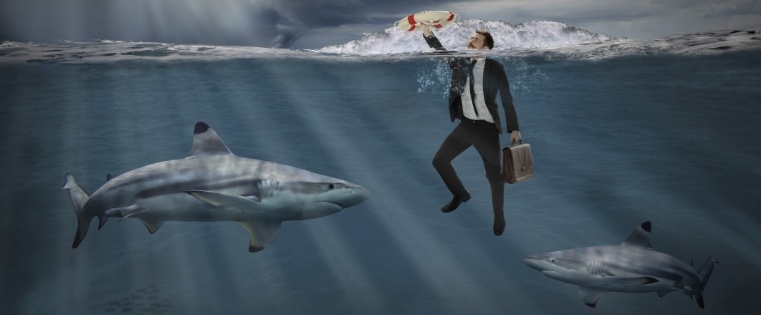“Choose co-founders the way you would choose a spouse,” advises entrepreneur and author Danielle Newnham. “The reality is that you will, at least in the early days, spend far more time with your co-founders than your partner.”

The co-founder relationship is perhaps the most personal of all business relationships. Co-founders are like the parents of a newborn business, and as such, they spend countless hours working (and arguing) together in order to see that business become successful.
Some of the world's most successful co-founders have had drastically different outlooks and skill sets, but it was often those differences that made the relationships work. Combine a sales-minded dreamer with a genius engineer, or combine a punk rocker with a hip-hop pioneer, and -- as you're about to discover -- the sum can often be greater than its parts.
The Inspiring Stories of 10 Famous Co-Founders
1) William Procter & James Gamble (P&G)
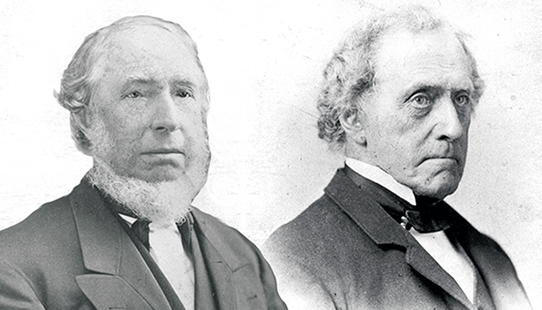
Source: P&G
Talk about a co-founder relationship being personal: William Procter and James Gamble, co-founders of what would become one of the world's largest companies, were brothers-in-law.
Procter, a candle maker, was married to Olivia Norris, while Gamble, a soap maker, was married to Olivia's sister Elizabeth. It was Olivia and Elizabeth's father who convinced Procter and Gamble (his sons-in-law) to merge their candle and soap-making operations, citing that they were competing for the same raw materials (namely, animal fat and oil). So in 1837, they took their father-in-law's advice and Procter & Gamble was born.
Today, P&G is a multinational consumer goods company that employs more than 100 thousand people and has a market cap north of $200 billion. Some of its most successful brands include Crest, Charmin, Gillette, and Head & Shoulders.
And to think it all started with a father-in-law's simple suggestion. The moral of the story here: Always listen to your in-laws. (Or at least try to tolerate them the best you can.)
2) Bill Hewlett & Dave Packard | HP
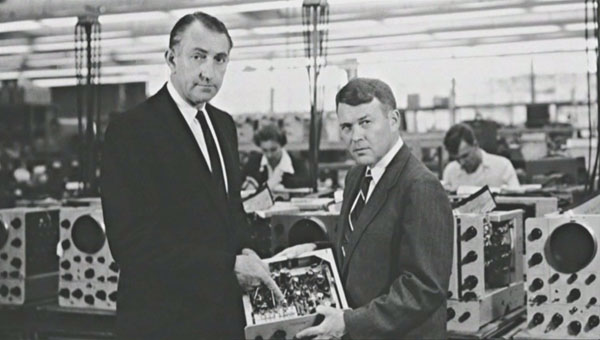
Source: HP Memory Project
It's unclear how Procter and Gamble decided on the order in which their names would appear, but for Bill Hewlett and David Packard, we know how they figured it out: They flipped a coin.
The original garage entrepreneurs (garagepreneurs?), Hewlett and Packard became friends in 1934 after they had both graduated from Stanford University with degrees in electrical engineering. In 1938, they rented a garage in Palo Alto and started working on their first product: an audio oscillator for testing sound equipment. In 1939, they formalized their partnership and held their infamous coin flip to determine whose name got top billing.
Hewlett and Packard both took an employee-centric view of management. And as a result, HP became one of the first U.S. companies to offer flexible work hours, profit-sharing, and several other employee benefits. As Bill Hewlett once noted, "What I'm most proud of is the fact that we really create a way to work with employees, let them share in the profits, and still keep control of it."
As partners, Hewlett and Packard always had each other's back. When Hewlett went to serve in the Army during WWII, Packard ran the company on his own until Hewlett's return. And similarly, when Packard stepped down as HP's CEO to serve as the U.S. Deputy Secretary of Defense during the Vietnam War, Hewlett stepped up to take his place. Together, the two entrepreneur/patriots developed a company culture at HP that has persisted for decades.
Today, the Palo Alto garage that Hewlett and Packard started out in is a California State Historical Landmark. It bears a plaque that reads "The Birthplace of the Silicon Valley."
3) Danielle Weisberg & Carly Zakin | theSkimm
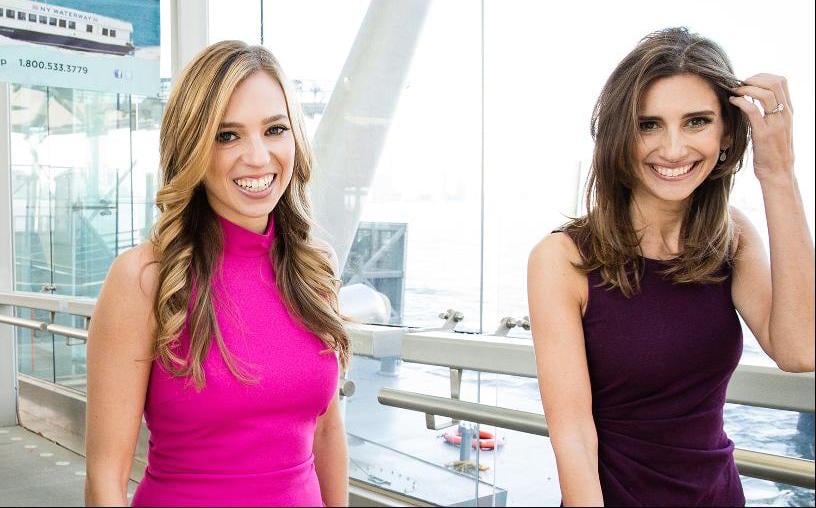
Source: Forbes
Boasting 1.5 million+ subscribers, theSkimm is an email newsletter phenomenon that's changing the way people consume the news.
TheSkimm co-founders Danielle Weisberg and Carly Zakin met while studying abroad in Rome, where -- according to their About Us page -- they bonded over "a mutual love of fried artichokes." Both ended up as producers at NBC News in New York, and after listening to their friends constantly ask them for the latest headlines, they realized that the news media landscape was shifting.
To capitalize on this shift, Weisberg and Zakin quit their jobs, moved in together, and launched theSkimm from their couch. "For two girls who grew up more 'Morning Glory' than 'The Social Network,' it took a lot of guts, and white wine, for us to make theSkimm a reality," they wrote on their About Us page.
Note: For a more in-depth look at how Weisberg and Zakin launched (and grew) theSkimm, check out our interview with them on The Growth Show.
4) Bill Gates & Paul Allen | Microsoft
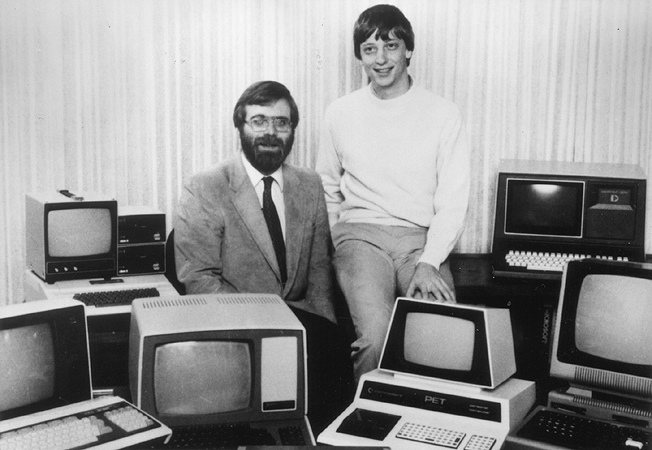
Source: Forbes
Not all co-founder stories have fairy tale endings. And while Microsoft's founding duo Bill Gates and Paul Allen both ended up multi-billionaires, their relationship didn't exactly go up and to the right.
Gates and Allen started out as childhood friends. Both attended the private Lakeside School in Seattle, where they bonded over a mutual passion for computers and BASIC programming. By the 1970s, both had moved to the Boston area -- Gates to attend Harvard, and Allen (three years Gates' senior) to work at Honeywell. It was there that Gates and Allen first learned about the Altair 8800, one of the world's first personal computers.
With the arrival of the Altair, Gates and Allen began to sense that writing (and selling) software for personal computers could be a big business. (Spoiler alert: They were right.) In 1975, the two formalized their partnership under the name "Micro-soft" and created their first product: a BASIC programming language for the Altair.
Even in the early days, however, there was some strain on the co-founder relationship. Gates was adamant that they split ownership of the business 60/40 (in Gates' favor), citing that he was still a student while Allen was able to earn a salary. A few years later, Gates fought to tip the ownership scales even more (to 64/36). And perhaps most egregiously of all, Allen once overheard Gates complaining about how unproductive he (Allen) had become, and how he wanted to dilute Allen's ownership in Microsoft even more. Allen was battling cancer at the time.
Allen resigned from Microsoft in 1983, but would remain on its board of directors until the year 2000.
5) Steve Jobs & Steve Wozniak | Apple
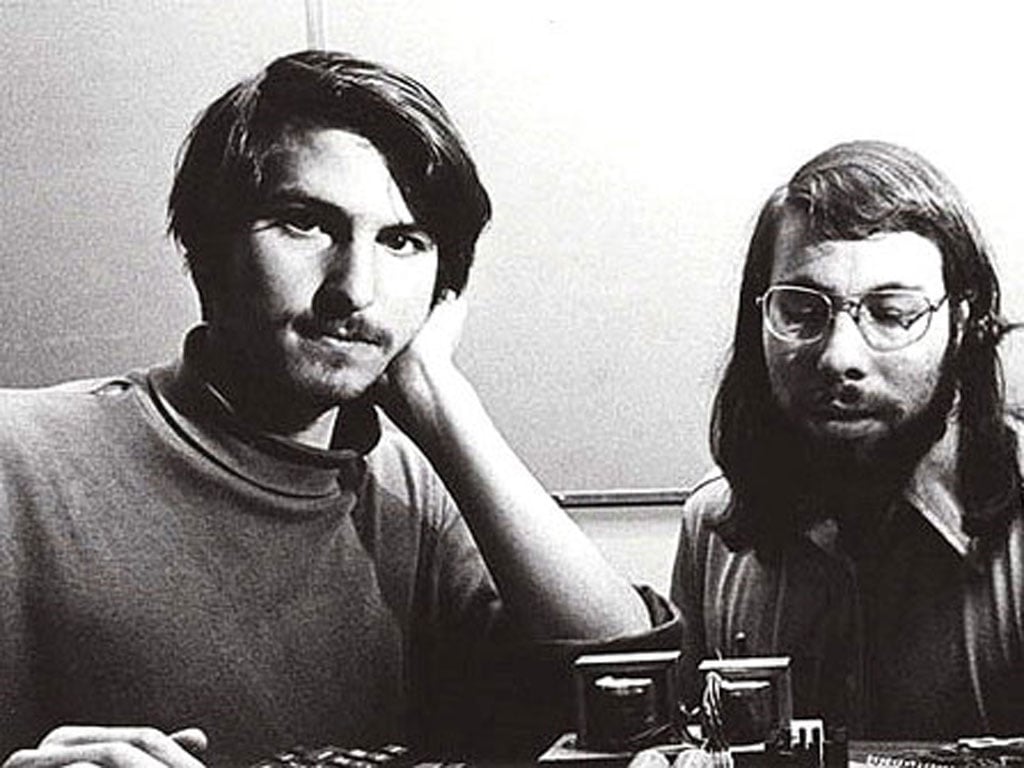
Source: The Next Web
The story of Steve Jobs and Steve Wozniak co-founding Apple in the Jobs' family garage is perhaps one of the best-known co-founding stories ever. So for the sake of saving paper -- errr, pixels -- here's the tl;dr version: Jobs and Wozniak met through a mutual friend. They were exposed to the latest personal computing technologies by way of the Homebrew Computer Club in Silicon Valley. The first product they collaborated on was a "blue box" for making free long-distance phone calls. Then, in 1976, they launched their first computer: The (retroactively named) Apple I.
Unlike the Gates/Allen partnership where both founders were technologically savvy, with the Jobs/Wozniak partnership, the former was more of a sales-minded, "big picture" guy, while the latter was an electronics guru. Needless to say, that combination of skill sets worked out rather well for Apple's co-founders.
And while Hollywood might portray Jobs and Wozniak as constantly butting heads, that's not how Wozniak remembers their co-founder relationship. "We never had a fight or an argument," he told the Milwaukee Business Journal back in 2014. "We were always friends."
6) Rick Rubin & Russell Simmons | Def Jam
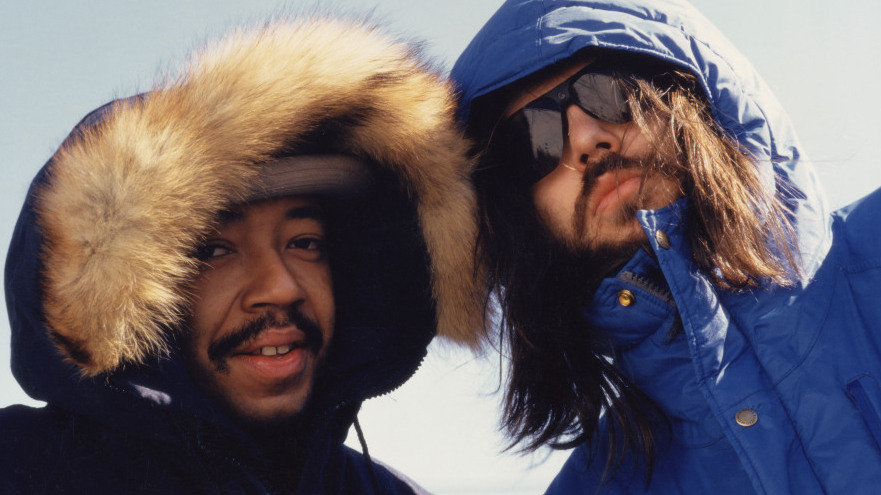
Source: NPR
It's one of the more unlikely partnerships on this list: A 21-year-old NYU student who plays in punk rock bands (Rick Rubin) joins forces with the 27-year-old manager of the hip-hop group Run-D.M.C. (Russell Simmons). The result? One of the world's most successful record labels, Def Jam.
The year was 1984, and Rubin had just started dipping his toes into the world of hip-hop. He had produced the track "It's Yours," by T La Rock and Jazzy Jay, which got the attention of Simmons. After meeting at a party, the two instantly hit it off and start running a record label together out of Rubin's dorm room. A year later, they released the first album under the Def Jam banner: LL Cool J's "Radio."
By the end of 1986, "Radio" had gone platinum, Def Jam had released the Beastie Boys' debut album, "Licensed to Ill" (which would go on to become the top-selling hip-hop album of the decade), and they had signed Chuck D.'s new group, Public Enemy.
It was a good year. And it was a year that marked Def Jam's transformation from a startup to a major music industry player. While Rubin would end up leaving Def Jam in 1988 to launch a new label, the original Rubin/Simmons partnership will always be remembered as a pioneering force in the music world. Perhaps their most notable contribution was folding the intensity of rock music into hip-hop music ... something that had never really been done before.
As Rubin once explained, "So up until the time of Def Jam, pretty much most of the rap records at the time were R&B records with people rapping on them. And then I think one of the things that separated our records from the ones that came prior was that they had more to do with what the actual hip hop culture was ... the goal was to capture the energy that you felt at a hip hop club."
7) Linda Avey & Anne Wojcicki | 23andMe
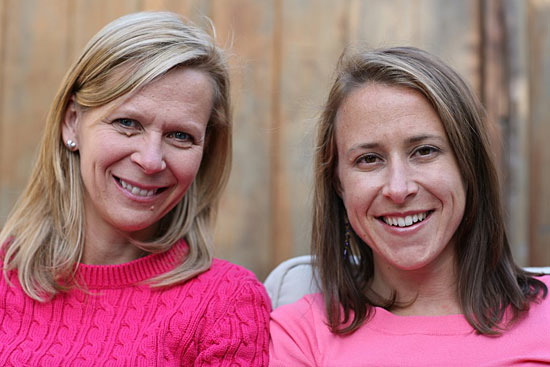
Source: Bloomberg
In some cases, the social impact a business could potentially have is more important to a founder than the business itself. That was the case with Linda Avey when she set out to found the genetic testing company 23andMe.
As the story goes, Avey's original business partner was on board for selling 23andMe's testing kits, but was against Avey's bigger plan: to build a massive genetics database for researchers, which could help lead to medical breakthroughs.
As Avey was pursuing funding for the project, she learned about Anne Wojcicki, a biotech analyst at a hedge fund. Avey invited her to dinner. "She showed up in jeans with a backpack slung over her shoulder (loved that!)," Avey wrote about Wojcicki on Quora.
After meeting with Avey several more times and learning more about the project, Wojcicki came to a decision: She wanted in. Avey was happy to have her, and the two worked together in a shared office to get 23andMe off the ground.
8) Ben Cohen & Jerry Greenfield | Ben & Jerry's
Source: One Life Success
Remember: Building a successful company is a marathon, not a sprint. And this saying is especially relevant in the case of Ben Cohen and Jerry Greenfield, considering how they met. As Cohen explained back in 1995, "I met Jerry running around the track in seventh grade gym class. We were the two slowest, fattest kids in the class. I liked him because he was funny and smart, and you could count on him."
While Cohen and Greenfield remained friends through high school and college, their business partnership almost never came to be. Cohen had his heart set on becoming a potter, while Greenfield was planning on becoming a doctor. Fortunately for ice cream fans everywhere, no one would buy Cohen's pottery, and no medical school would accept Greenfield. So after debating between starting a bagel business or starting an ice cream business, they chose the latter based on the lower start-up costs.
Having grown up together in New York, Cohen and Greenfield eventually made their way to Vermont in search of a suitable location for their first homemade ice cream parlor. In 1978, they landed on a dilapidated gas station, which they fixed up themselves. By 1983, they were franchising Ben & Jerry's stores and selling their signature ice creams (like Chunky Monkey) via independent distributors. By 1984, they had already topped $4 million in annual sales, and by 1985, they were donating 7.5% of their annual pre-tax profits to charity via the Ben & Jerry's Foundation.
"When we first started, it was just a lark. We never expected to have anything more than that one homemade ice cream shop, but now Jerry and I are millionaires," Cohen once said. "Our relationship hasn't changed at all ... Food has always been our binding tie - food and our girth."
9) Larry Page & Sergey Brin | Google
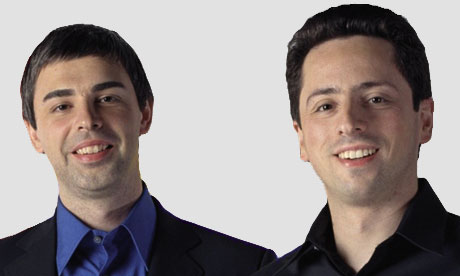
Source: The Guardian
In 1995, a 22-year-old Larry Page visited Stanford as a prospective computer science doctorate student. His tour guide? A 21-year-old Sergey Brin, who was already working on his computer science doctorate at the school.
The two didn't become friends right away, as both were very opinionated and considered each other "obnoxious," according to a Wired interview. But as Page began researching how websites link between one another, and started building out technology that could identify all of those millions of connections, Brin became fascinated.
By 1998, Page and Brin had joined forces, dropped out of Stanford, and -- like Jobs & Wozniak and Hewlett & Packard before them -- set up shop in a garage. In the early days, their Google search engine pulled in 10 thousand queries a day. Today, it's estimated that Google receives 3.5 billion searches per day.
10) Julia Hartz & Kevin Hartz | Eventbrite

Source: Vator.tv
Julia had a great job working at FX Networks. Her Hollywood office even came with a view. But then she met her future husband, Silicon Valley investor and entrepreneur Kevin Hartz. First he asked her to marry him (she said yes), and then he asked her to co-found a company with him (to which she also said yes).
Eventbrite, a self-service ticketing platform, was born in a wiring closet in 2006. Julia was in charge of customer experience and business operations, while Kevin -- with the help of a third partner, Renaud Visage -- worked on the product. Today, Eventbrite has a valuation north of $1 billion.
As a husband and wife co-founding team, the dynamics of the relationship were obviously a bit different compared to the entrepreneurial norm. However, as Kevin said in an interview back in 2013, "When you’re working with founders, your fellow founders, that relationship is fundamental whether it’s romantic or not.”
In that same interview, Julia commented on how the two were able to preserve their relationship as the business grew: "We had this law that we would divide and conquer, and wouldn’t work on the same thing at the same time. It just so happened we had complimentary skills so that was an easy thing to do."
Any other great co-founding duos out there that we missed? Tell us about them in the comments section below!
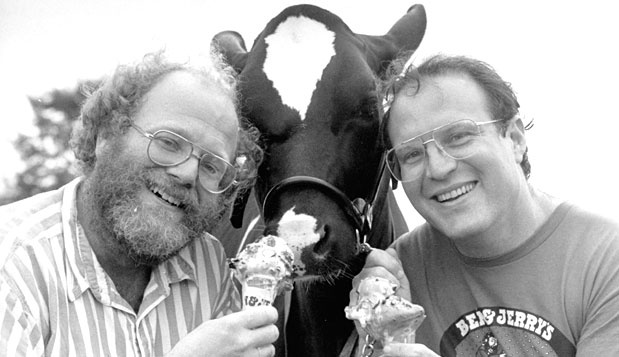



![How to Create a Case Study Video That Converts Leads [Video]](https://blog.hubspot.com/hubfs/case-study-video.png)



